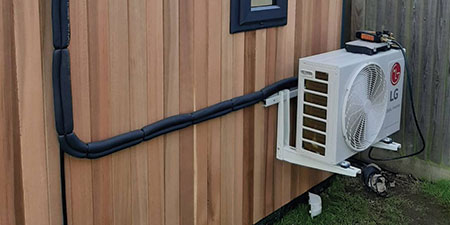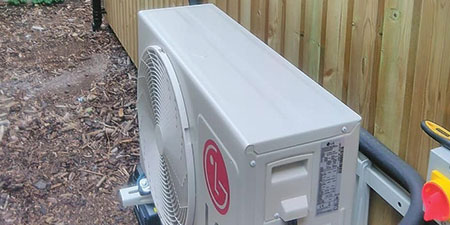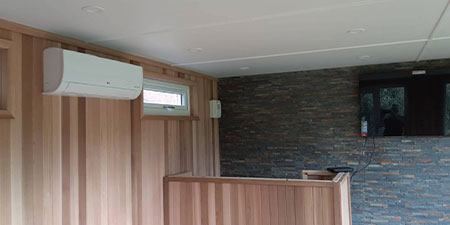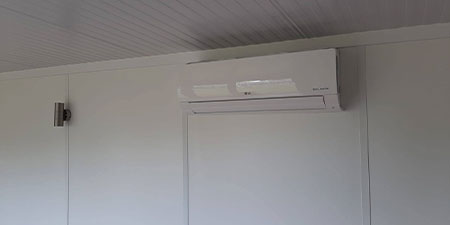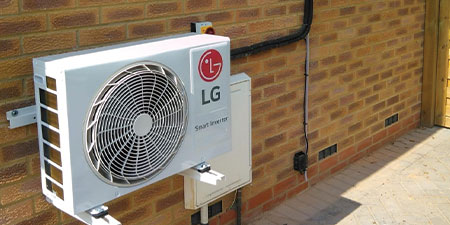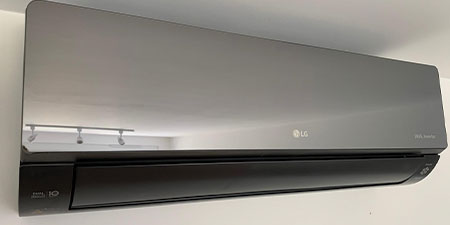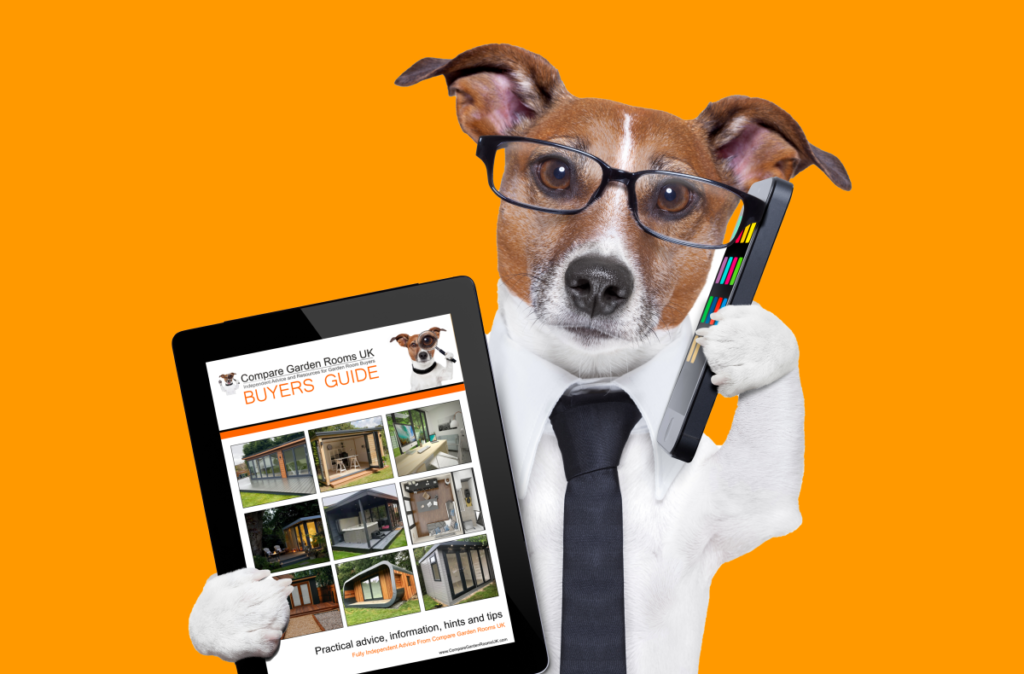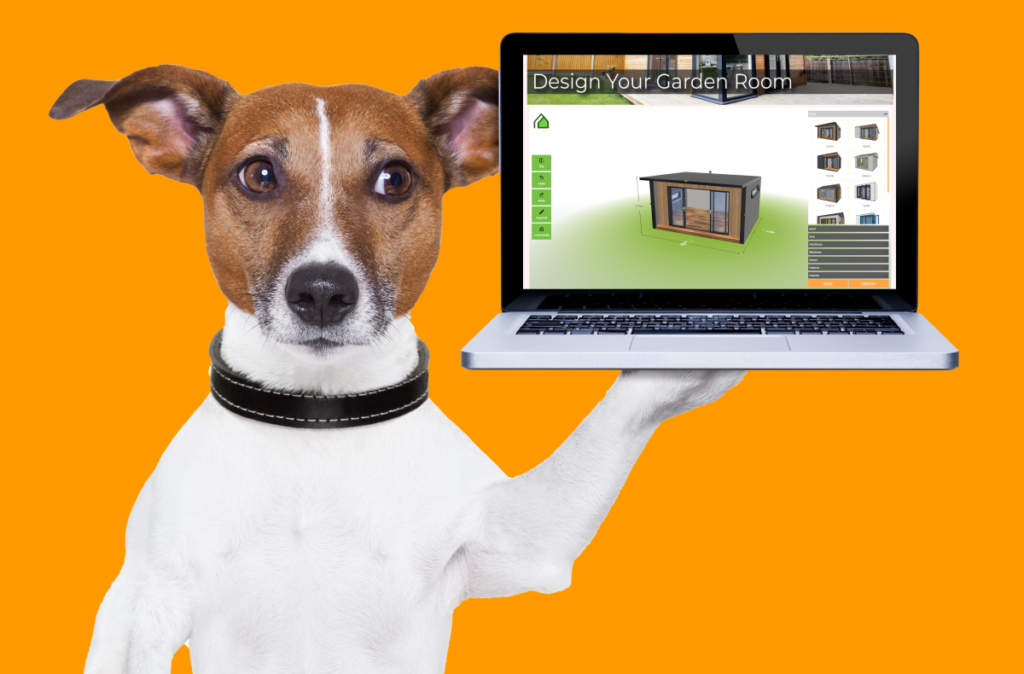
Cooleasy
Cooleasy
We are proud to be one of the UK’s top trade air conditioning suppliers and can cater for all your heating and cooling requirements, whether for home or work.
Here at Cooleasy we understand that without a satisfied customer base, a company will flounder. That’s why we strive to be dedicated to our clients and offer a reliable, professional and friendly service.
Being part of Britain’s leading renewable energy suppliers, we are able to offer our customers competitive prices for all your heating and cooling needs, whilst ensuring your product will be cost effective and energy efficient.
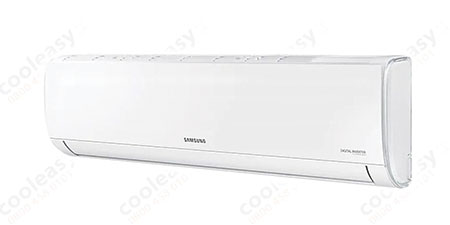
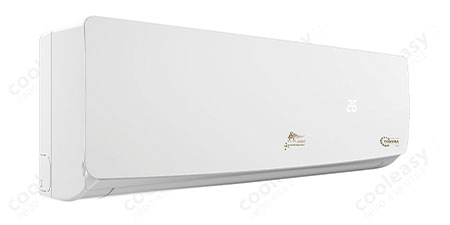
- No gasing required (already included in the Air Con system).
- Systems come complete with pre-insulated and pre-flared pipes.
- All system prices include VAT and Delivery.
- Next day delivery available on almost all orders placed before noon.
- Friendly and helpful voice at the end of the phone to help you place your order.
- Quiet operation from 29 dB (A)
- Adjustable fan speed
- 24-hour sleep timer
- Infra-red remote control
- LED display
- 4m/6m of pipe depending on the size of unit
- Click on the images below to get futher information and unit specifications
Choosing the correct system
To help select the right system, use the following chart to select room size and power output required:
| Power Output | Room Size (up to) (approx) | ||
| kW | Btu | Square metres (m²) | Square foot (ft²) |
| 1.5 | 5000 | 12 | 120 |
| 2.0 | 7000 | 16 | 160 |
| 2.5 | 9000 | 20 | 200 |
| 3.5 | 12,000 | 30 | 300 |
| 4.5 | 15,000 | 40 | 400 |
| 5.0 | 18,000 | 45 | 450 |
| 6.2 | 21,000 | 50 | 500 |
| 7.0 | 24,000 | 55 | 545 |
| 8.0 | 27,000 | 65 | 645 |
| 10.0 | 34,000 | 80 | 800 |
| 12.5 | 43,000 | 100 | 990 |
| 14.0 | 48,000 | 110 | 1090 |
Yes. When compared with an electric heater, air conditioning is roughly 4 times more efficient than plug in heaters. Most modern systems have a CoP (coefficient of performance) of 4 (roughly). So for every Kilowatt (kW) of energy used, it will produce roughly 4kW output . The majority of modern systems are a minimum of A rated, with many being A+ or higher.
This depends on the amount of usage the system has. For systems used for an average 8 hours per day (cooling in summer and heating in winter) and being maintained correctly, you should expect a minimum of 6 years reliable life. Most systems have a minimum 5 year warranty
The system should be serviced annually by an F-Gas registered engineer, which will keep the system running efficiently. Other than the annual service, the indoor unit should be cleaned every 1 – 3 months (depending on usage) and the outdoor unit should be cleaned every 6 – 12 months (again depending on usage) and can be tied into you annual service schedule
Yes. Most modern (almost all) systems are known as ‘Heat Pumps’ which will allow the system to produce heating for the colder months and cooling for the warmer months – making Air Conditioning dual purpose
In cooling mode, the system will take the moisture out of the air, so will act like a dehumidifier also. This won’t happen in heating mode though (system effectively works in reverse during heating mode). There is also a ‘Dry’ mode, which will take up to 1lt of water from the air per hour if it detects excessive humidity in the air. It is not designed to be a standalone dehumidifier.
The indoor unit has to be positioned a minimum of 100mm from the ceiling with a 150mm gap from the sides (this aides accessibility for maintenance). The outdoor unit must be positioned with a minimum 1 metre clearance to the front and 500mm at the sides, to aid airflow, maximising efficiency from the system.
As of December the 1st 2011 the laws have been relaxed on installation of air source heat pumps in England and Scotland. This relaxation of the laws has been introduced to make it more appealing to people who want to have air source heat pumps installed and don’t want to go through the rigmarole of applying to your local council for planning permission.
This is not an complete list of the regulations required for air source heat pump installations to be ‘Permitted Developments’ however it is a very good outline to follow.
This depends on the amount of rooms you wish to supply with cooling or heating.
Single-spilt systems are designed for 1 room or location.
Multi-split systems are designed for multiple rooms, running 1 outdoor unit with multiple indoor units (with multi-split systems, all indoor units must be operating in cooling or heating mode simultaneously)
The indoor unit will generate condensate, which is drained off with a condensate pipe to the outside of the building, so the indoor unit shouldn’t ever leak water inside.
No. Air conditioning is a sealed system running refrigerant, so no plumbing for a water supply is required.
There are rumours that air conditioning has been linked to Legionnaires Disease, but this is a complete myth and very untrue (with regard to sealed systems). As there is no standing water, Legionnaires does not apply to air conditioning. The internal (cleanable) filters on the indoor unit are designed to filter bacteria in the air, so actually promote good health with cleaner air.
Domestic heat pump installation will be classed as a Permitted Development, providing they comply with the following criteria:
- There is no wind turbine at the property.
- The external is less than 0.6 m3 (This is suprisingly large actually, the largest unit that we sell is roughly half of this)
- The unit is more than one metre from the edge of the householders property (This means the unit has to be not within 1 meters of your neighbours property)
- It is not on a pitched roof or near the edge of a flat roof
- Additional criteria will need to be met if the house is in a World Heritage Site
- This list is just an outline guide, you should read the full legislation here.
Domestic installation of an air source heat pump in Scotland will be classed as a Permitted Development, unless:
- It would result in the presence within the curtilage of a dwelling of more than one air source heat pump
- The air source heat pump would be situated less than 100 metres from the curtilage of another dwelling
- The air source heat pump is visible from the road in a conservation area
- The air source heat pump would be within a World Heritage Site or the curtilage of a listed building
In addition, before beginning the development the developer must apply to the planning authority for:
A determination as to whether the prior approval of the authority will be required for the siting and external appearance of the air source heat pump.
Other conditions will also apply to ensuring installation of an air source heat pump will be a permitted development in Scotland. Full legislation details can be read here
People think that air conditioning lowers the temperature in an area, by simply pumping cool air in.
However, what’s really happening is the heat from the warm air in the area to be cooled, is being removed and cycled back through as cooled air. This cycle continues until the room reaches the desired temperature.
An air conditioner is in essence, a refrigerator without the insulated box covering its parts.
It uses the evaporation of a refrigerant to provide cooling or heating as required. The mechanics of the evaporation cycle are the same in a refrigerator as they are in an air conditioning unit/system.
A split system has an inside unit and an outside unit, connected via refrigerant hoses and electrical cable. The great advantage of a split system is that they are also heat pumps (all modern systems) and can provide exceptional warmth to the desired area during the cooler months.
